Announcement
AVP Holiday Card – 2011
29 December 2011
Artwork by Stephanie Housley from Coral & Tusk
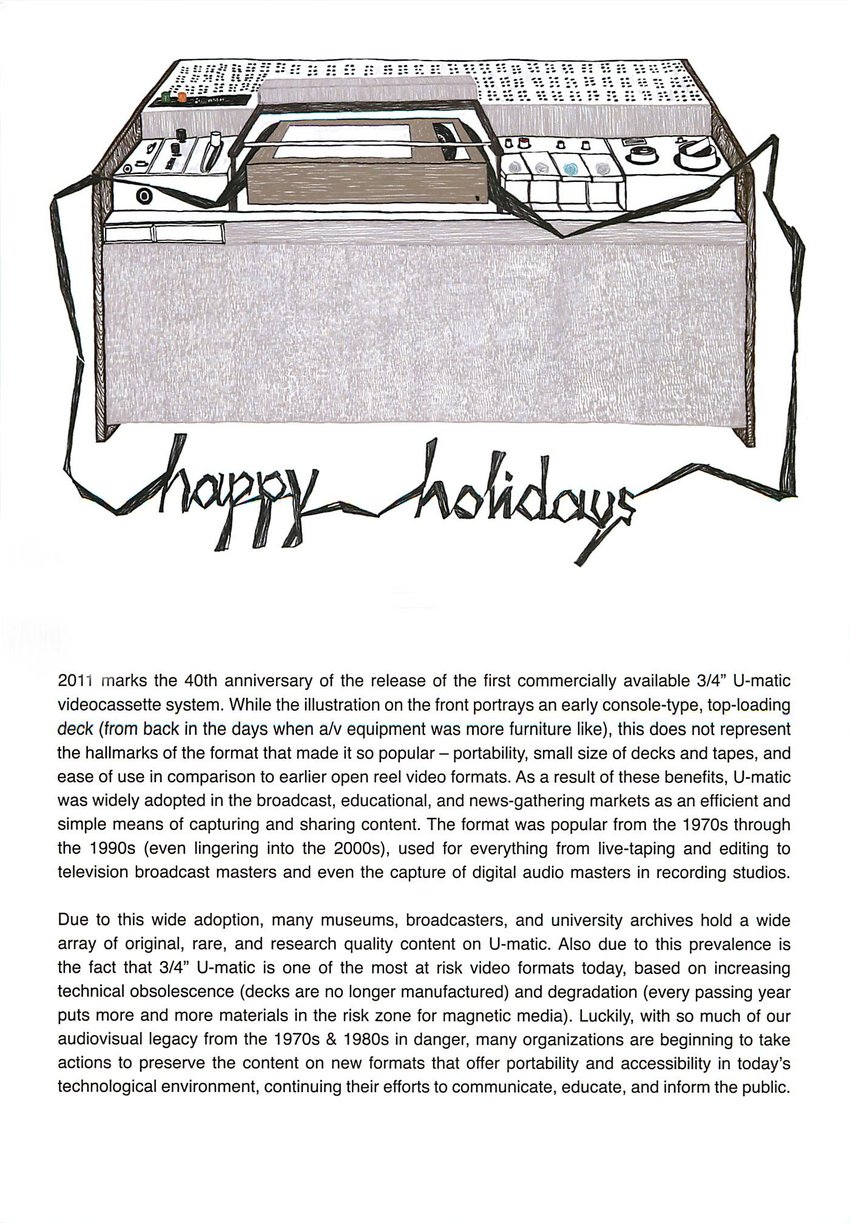
All Images on this page are copyright protected and may not be reproduced or used without permission from AudioVisual Preservation Solutions.
AVPS Holiday Cards 2010-2011
29 December 2011
All Images on this page are copyright protected and may not be reproduced or used without permission from AudioVisual Preservation Solutions.
Select links below to see a larger image with the full text
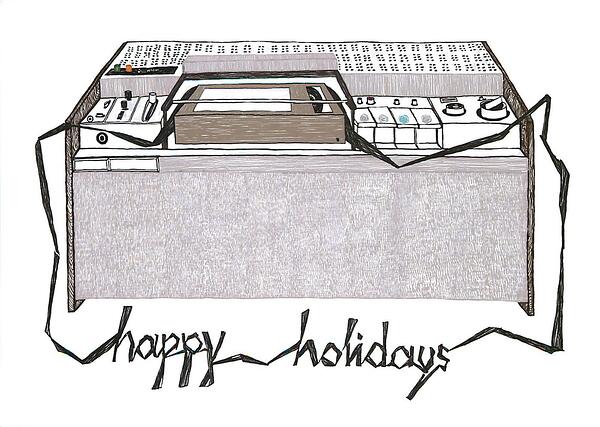
2010

AVP Holiday Card – 2010
31 December 2010
Artwork by Stephanie Housley from Coral & Tusk (laser-cut)
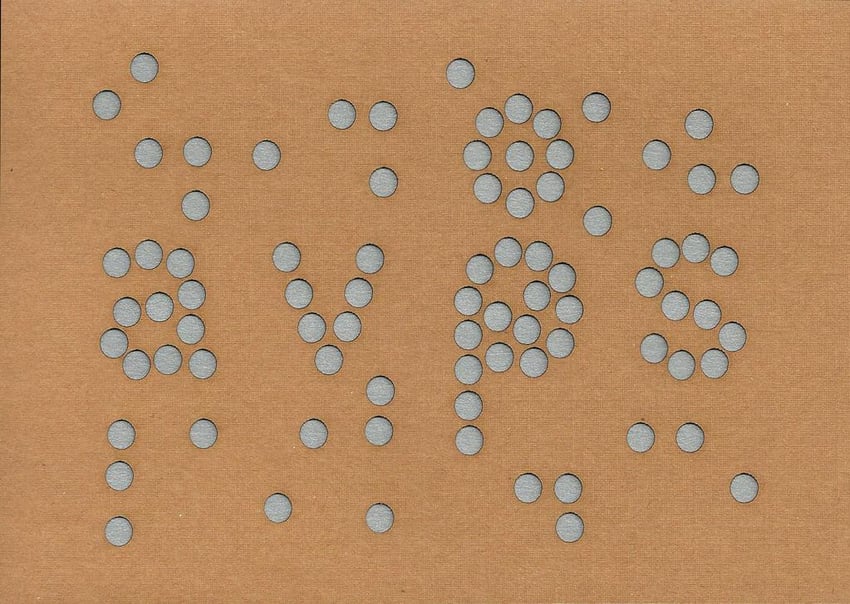
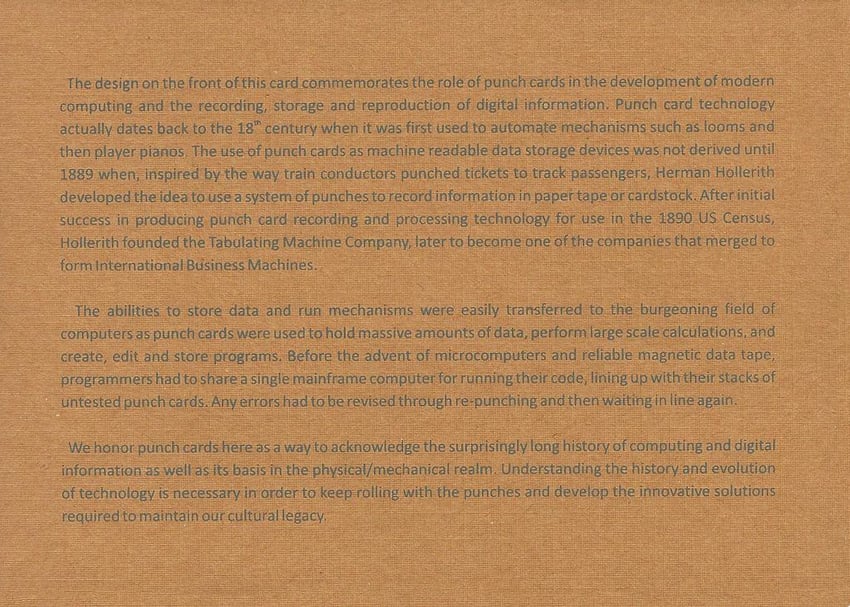
All Images on this page are copyright protected and may not be reproduced or used without permission from AudioVisual Preservation Solutions.
AVP Holiday Card – 2009
31 December 2009
Artwork by Stephanie Housley from Coral & Tusk
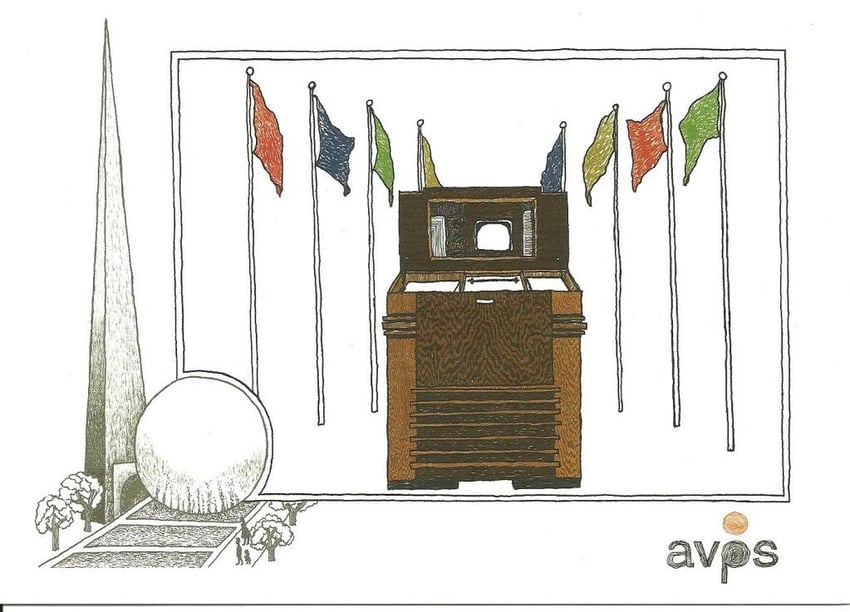
| The illustration on the front of this card celebrates the 70th Anniversary of the introduction of television to the public, which took place in Flushing Meadows, New York at the 1939 World’s Fair. Under the banner of “Building the World of Tomorrow”, over 45 million people visited the Fair with sights set on leaving the Great Depression behind and catching glimpses of a hopeful tomorrow.RCA used the event to launch the first four models of television receivers made available to the public. The one depicted on the front is the TRK-12, the top of the line model featuring a 12-inch screen and selling for $600. The Cathode Ray Tube, or CRT, was mounted vertically in the cabinet and an angled mirror reflected the image from the screen for viewers. In coordination with this release and the opening of the Fair, April 30th, 1939 brought about the making of television broadcast history with the launch of the first regularly scheduled programming on W2XBS (which later became WNBC). Visitors to the Fair were given the opportunity to be televised. Exemplifying the absence of video recording, as proof of being televised visitors were given an official RCA paper card stating their name and the date of the broadcast.With the exception of adding color and standards, television, broadcasting and video signals remained relatively unaltered from 1939 to recent times. However, in the past few years dramatic change has occurred. June of 2009 brought about the end of analog television broadcast in the USA, concluding its 70-year stretch. Also facing obsolescence are the CRT, standard definition and interlace scanning, being replaced by flat displays, high definition and progressive scanning. The evolution presents challenging preservation and access issues for caretakers of legacy video.One could have hardly overestimated the dramatic and permanent impact that broadcast television technology has had on world events since its inception. Regardless of your views on the quality of most TV programming today, on a whole it arguably provides the richest and potentially most accessible record of human undertakings over the last century. Our duty now is to preserve that record using current and advancing technologies. Access to history and learning from it is one of the ways we can ensure that all of our New Years are better than the years before. |
All Images on this page are copyright protected and may not be reproduced or used without permission from AudioVisual Preservation Solutions.
Holiday Movies 2009
22 December 2009
I reckon ’tis the season and all, but lots of people I run into are talking about their favorite holiday movies right around now. I’ve been noticing more and more the past few years that the pool of these favorites tends to be growing, and at a much faster rate than the production of new “holiday-themed” films.
I remember when films on television were singular events, especially when associated with a certain day. We watched The Wizard of Oz every year because that’s what was showing on Thanksgiving besides football and the Macy’s parade. However, with the expansion of cable and the growth in means of access to home viewing options like DVD and on-demand video there seem to be fewer and fewer points of common reference for such a topic. I don’t know if my nephew got his Oz on this year or if he watched something like Dragonball Z Saves Happy Turkey Day.
This reminds of the several literature professors I had in college who lamented the fact that there was no common reference for speaking about literature anymore, that they could not rely on their students having read any Jane Austen or Moby Dick or having any kind of Biblical literacy. They had to start from scratch in order to teach texts that relied on having knowledge of precedent or contemporary texts.
But culture moves on. Fashion has changed! Is this issue really a problem, or am I just being a Medieval fuddy-duddy? Can the non-canonical exist without reference to and knowledge of the canon? Or is that too limiting to free culture?
I have my own answers to these questions, but I feel they are topics best reserved for discussing over a pitcher of eggnog, for disagreeing just to be able to talk in depth about a topic one loves. And besides, I can’t complain because Hitchcock has always been my holiday/special event go to for movies.
Happy Holidays!
— Joshua Ranger
AVPS Releases Their 2009 Holiday Card
18 December 2009
AudioVisual Preservation Solutions released its fourth annual original greeting card for the 2009 holiday season. The 2009 card features an illustration of the RCA TRK-12, the top of the line model of the first televisions made available to the public. The card commemorates the 70th anniversary of RCA’s public release as well as that of the 1939 World’s Fair in New York where the first televisions were on display.
The 2008 holiday card features a laser-cut illustration representing four frames of film in recognition of the significance of moving image film in our culture.
As in past years, the cards are inspired by the field that we work in and its history. As audiovisual media becomes a more ingrained part of society, we often forget the moments of origin or the amazing advancements they represented. The original art work is created by Stephanie Housley, a New York based artist/designer.
We are pleased to send these greetings to our clients and all of the other members of our community who are dedicated to the preservation of our audiovisual heritage. We are especially delighted to note that we often see the cards posted in the archives we work in long after the holiday season has ended.
To see the 2008 and 2009 holiday cards click here:
https://www.avpreserve.com/uncategorized/avps-holiday-cards-2008-09/
To see the 2006 and 2007 holiday cards click here:
https://www.avpreserve.com/uncategorized/avps-holiday-cards/
AVPS Holiday Cards — 2006
20 September 2009
All Images on this page are copyright protected and may not be reproduced or used without permission from AudioVisual Preservation Solutions.
 |
| The Ampex VR-1000 Quadruplex Videotape Recorder has been illustrated on the front of the card in commemoration of videotape’s 50th anniversary. We can thank the Ampex VR-1000 for breathing life into videotape as we know it today (warts and all!) by being the first commercially available videotape recorder back in 1956. The VR-1000 was also responsible for making history on November 30, 1956 when it reproduced CBS’s recording of “Douglas Edwards and the News”. This event granted the public its first look at a television broadcast using videotape. |
AVPS Holiday Cards — 2007
20 September 2009
All Images on this page are copyright protected and may not be reproduced or used without permission from AudioVisual Preservation Solutions.
 |
| The disk illustrated on the front of this card pays homage to the aesthetic quality of labels seen on commercially released 78RPM disks – also known as shellacs. No other recording medium before or since has exhibited such beautifully crafted decorative labels, making them a significant experiential aspect of working with the medium. UNESCO estimates that there are ten million 78RPM disks worldwide. Fortunately these disks are one of the most resilient formats ever to exist. Their primary physical threat is breakage due to mishandling or disaster. As the main audio medium for mass distribution of content in the first half of the 20th century, content found on these disks is amazingly diverse and relevant to defining the time period in which they thrived. Efforts toward preservation of the content found on these disks continue on as evidenced by the release of a 78RPM calibration disk from the Audio Engineering Society this year! |
AVPS Holiday Cards
20 September 2009
All Images on this page are copyright protected and may not be reproduced or used without permission from AudioVisual Preservation Solutions.
Select links below to see a larger image with the full text.
2006
2007
AVP Holiday Card – 2008
31 December 2008
Artwork by Stephanie Housley from Coral & Tusk (laser-cut)
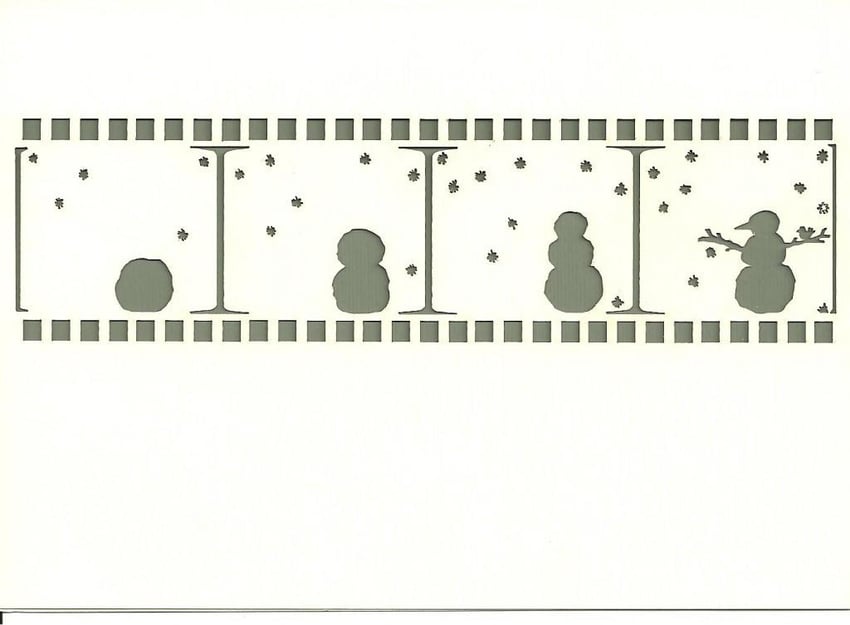
The custom laser-cut illustration on the front of the card was created by AVPS in recognition of the significance of moving image film in our culture for over a century. According to Film Preservation 1993: A Study of the Current State of American Film Preservation, “fewer than 20% of the features of the 1920s survive in complete form; for features of the 1910s, the survival rate falls to about 10%”. Fortunately this trend got significantly better with each decade following the 1920s, owing to increased awareness and development of proper preservation and collection management practices. Since the late 19th century emergence of moving image film we have witnessed audiotape and videotape enter into existence. With the dawning of the 21st century, file-based formats are rapidly replacing tape-based formats on all fronts, while film still remains relevant for production and preservation. Today, film is the “darling” of the moving image and sound archive community. Film’s unparalleled visual aesthetic combined with its technological simplicity and depth has ensured its place in our cultural fabric and our archives for many years to come.
All Images on this page are copyright protected and may not be reproduced or used without permission from AudioVisual Preservation Solutions.